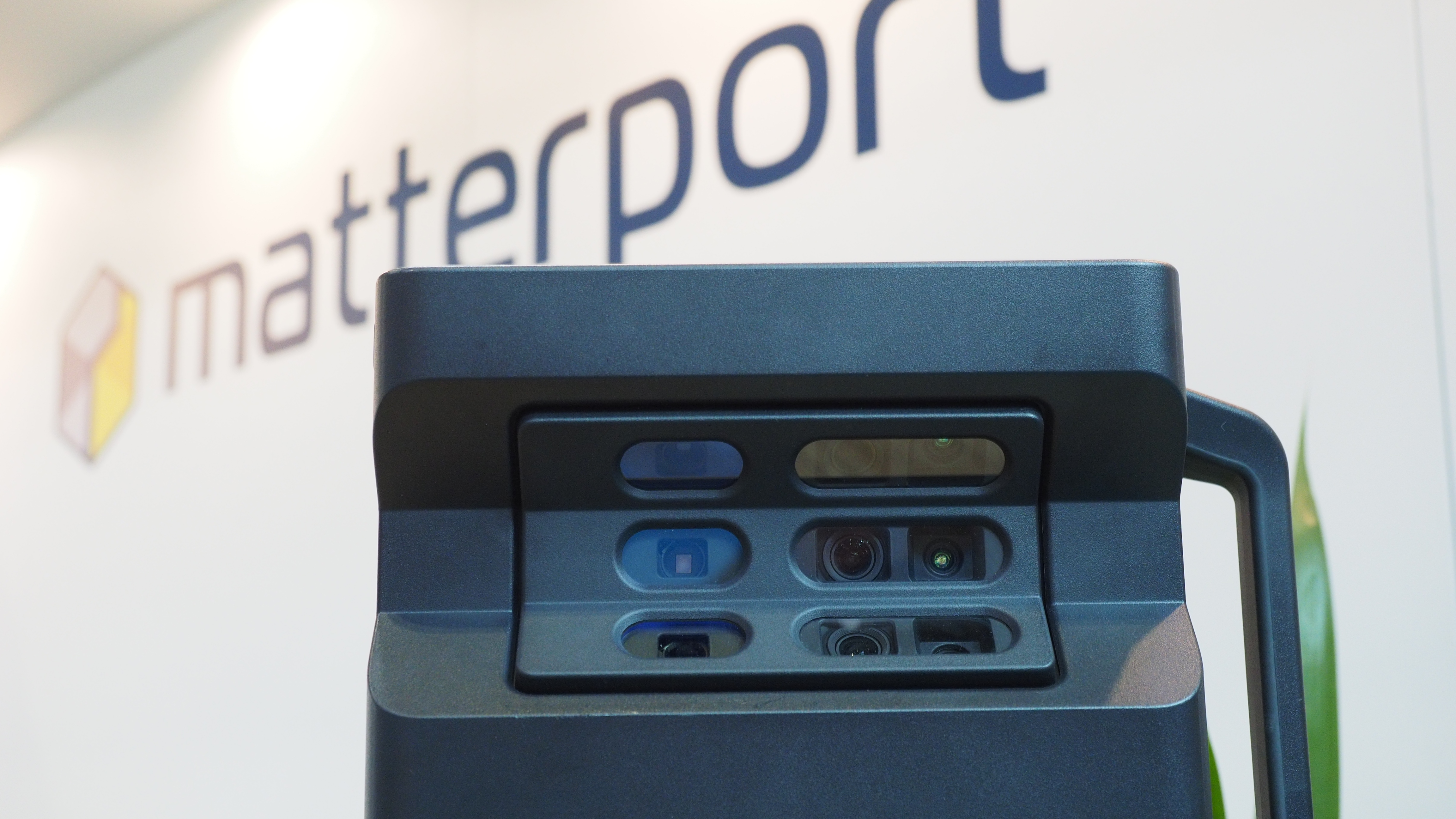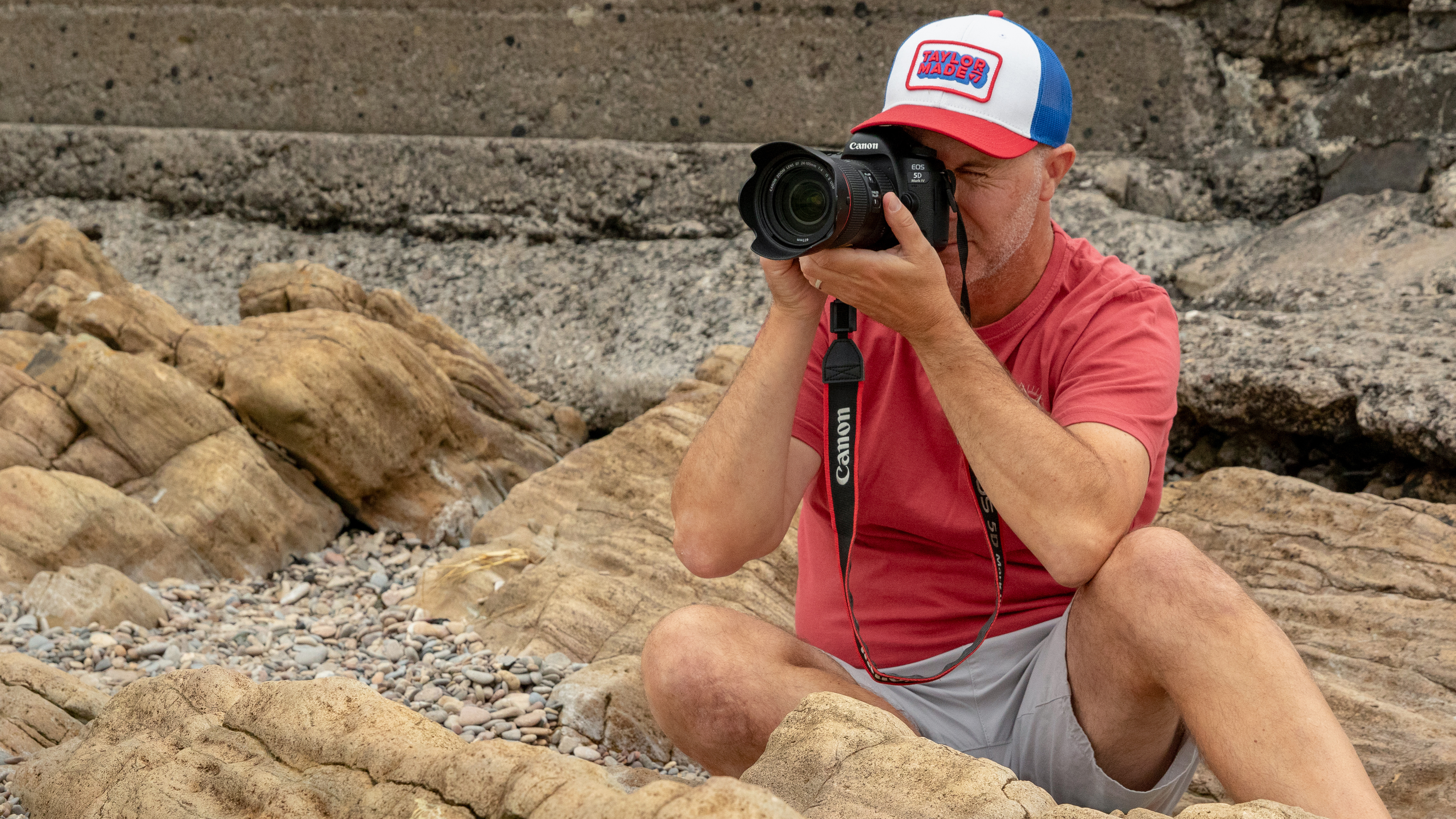The Matterport 3D VR system is like Google Street View for your house
Matterport’s cloud-based rendering system can recreate any interior as an immersive walk-through VR experience!

If you thought 360 cameras were clever, then you’ve probably never seen anything like the Matterport Showcase 3.0 system. We got a full demo at The Photography Show 2019 and got the full low-down from Laurence Woolley, the company’s Senior Associate, EMEA.
Matterport Showcase 3.0 is a 360 VR capture system that renders building interiors as 3D models which you can walk through and look around in an immersive virtual reality environment. It’s ideal for real estate agents selling properties, hotels offering accommodation, architects, engineers and construction experts. It’s very much a business-to-business service, but it’s an exciting glimpse into the potential of 360 imaging and VR for the rest of us.
There are three parts to the system. The first is the camera used to capture the building interior, and currently this is a sophisticated Matterport Pro 2 3D camera with six optical sensors and three dual-lens infra-red emitters for capturing 3D depth information.

The Matterport camera is fitted to a spinning mount and controlled remotely via an iPad. Operation is super-simple and each ‘scan’ takes only a few moments. You then move the camera to a new location to carry out another scan.
These cameras cost £2,510 to buy, but the exciting news here is that users will soon be able to use regular 360 cameras like the Ricoh Theta V or Insta360 One X instead. More on this below…

It’s the software that’s the clever part
The camera is simply a tool for capturing the 3D VR image data. Matterport actually considers itself to be a software rather than a hardware company – or, to be more specific, a SaaS (Software as a Service) company.
All the complex merging and 3D modelling takes place online using the company’s own servers and highly sophisticated processing algorithms. The technical term is ‘Photogrammatery’ – dimensional modelling from real world images. This ‘processing pipeline’ is the company’s unique selling point. It generates interactive 3D models which can be viewed on Matterport’s own website or embedded in the users’ own web pages.
The best camera deals, reviews, product advice, and unmissable photography news, direct to your inbox!
This is offered via a series of tiered subscription packages aimed at different user levels, volumes and requirements. The Matterport camera is sold as a one-off purchase and is simply a tool to enable users to capture the data for the online 3D modelling process.
Apart from the camera purchase, there are Basic (£39 per month), Professional (£79) and Business (£119) plans offering different numbers of hosted spaces and collaborators, plus a £16 fee for each model processed, with reductions for annual billing.
This is a business service aimed at real estate agents, architects, construction engineers and even hotel and restaurant owners, but quite apart from its potential as a business tool, it suggests and exciting potential future for everyday image capture.

So now you can use a regular 360 camera?
Matterport is introducing support for regular 360 cameras like the Ricoh Theta V and Insta360 ONE X. These cameras don’t offer the sophisticated 3D modelling accuracy and HDR image capture of the regular Matterport camera, but they’re cheaper and simpler to use and offer a lower-cost entry point for new users who can then upgrade to the more accurate scanning of the regular Matterport camera when they need to.
But don’t 360 cameras already offer a 360 VR experience? Not exactly. They are designed for displaying a 360 view from a single viewpoint – what the Matterport system does is combine images from multiple viewpoints into a much larger virtual reality environment. With a regular 360 camera you can look around a room from a single fixed position; with the Matterport system you can walk around the entire house.
See for yourself! We've embedded one of Matterport's 3D VR interiors below:
Matterport has so far built 1.5 million ‘models’ (immersive 3D interiors) and has an ambitious target of 100 million ‘built environments’.
The remark in the headline about Google Street View is closer to reality than we thought. Matterport has a partnership with Google which allows any model to be synchronised with the Google ecosystem – so you can walk straight off a Google Street View Map into a restaurant or a hotel, take a long look around and even book a specific room or table. Amazing.
Read more:
• Best 360 cameras in 2019
• The Insta360 EVO bends over backwards for 360 capture or 180-degree 3D
• Ricoh Theta Z1 360 camera is announced
• The Insta360 Titan promises VR video you won’t believe

Rod is an independent photography journalist and editor, and a long-standing Digital Camera World contributor, having previously worked as DCW's Group Reviews editor. Before that he has been technique editor on N-Photo, Head of Testing for the photography division and Camera Channel editor on TechRadar, as well as contributing to many other publications. He has been writing about photography technique, photo editing and digital cameras since they first appeared, and before that began his career writing about film photography. He has used and reviewed practically every interchangeable lens camera launched in the past 20 years, from entry-level DSLRs to medium format cameras, together with lenses, tripods, gimbals, light meters, camera bags and more. Rod has his own camera gear blog at fotovolo.com but also writes about photo-editing applications and techniques at lifeafterphotoshop.com
